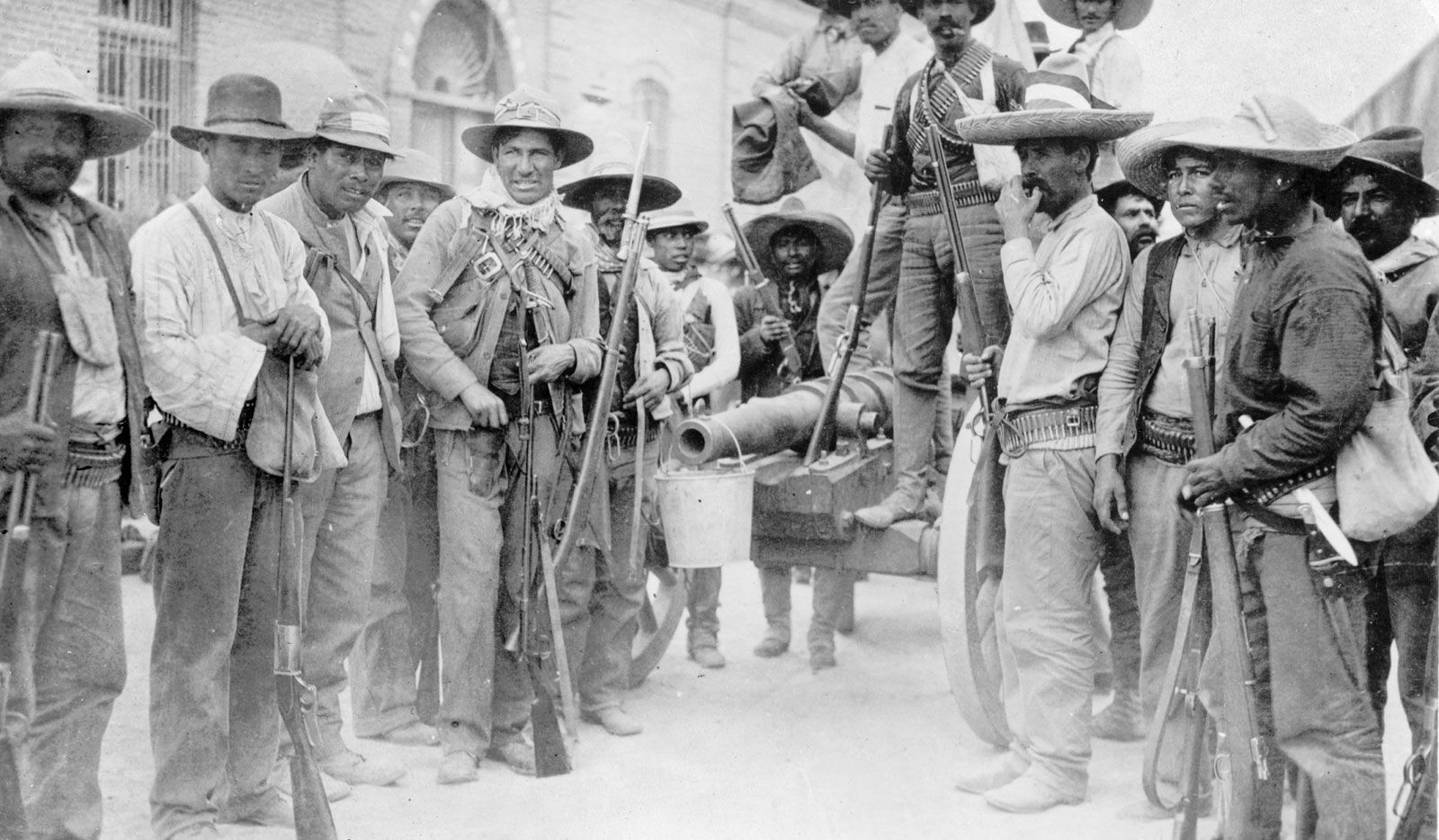Francisco Madero’s ascent to power was initially hailed as a new dawn for Mexico, promising an end to Porfirio Díaz’s long dictatorship. However, the Madero regime quickly began to falter, plunging Mexico deeper into the throes of the Mexican Revolutionary War. Despite his genuine commitment to constitutional government, Madero proved to be an indecisive leader, unable to satisfy the diverse factions that had propelled him to power. His failure to enact substantial economic reforms disillusioned many of his supporters, setting the stage for further conflict and instability within the Mexican Revolutionary War landscape.
 Mexican Revolution insurrectionists with a homemade cannon in Juárez, 1911, highlighting the early stages of the Mexican Revolutionary War
Mexican Revolution insurrectionists with a homemade cannon in Juárez, 1911, highlighting the early stages of the Mexican Revolutionary War
One of the most significant challenges to Madero’s authority arose from the peasantry’s demands for land reform, a central issue in the Mexican Revolutionary War. Emiliano Zapata, a key figure in the revolutionary movement, vehemently opposed Madero’s moderate approach, advocating for the immediate return of land to indigenous communities. This agrarian unrest was a critical component of the broader Mexican Revolutionary War. Simultaneously, Pascual Orozco, who had initially supported Madero, grew impatient with the slow pace of change. Driven by dissatisfaction, Orozco launched a rebellion in the north, further escalating the Mexican Revolutionary War and demonstrating the widespread discontent with Madero’s leadership.
Adding to Madero’s mounting troubles was the hostile stance of the U.S. Ambassador Henry Lane Wilson. Wilson became a vocal critic of the Madero administration, and the United States government, increasingly concerned about the protection of American business interests during the Mexican Revolutionary War, also turned against Madero. They feared his conciliatory approach to rebel groups was exacerbating the civil unrest. This culminated in a dramatic episode known as “La Decena Trágica” (The Ten Tragic Days), where Félix Díaz, nephew of the former dictator, led another rebel faction against federal troops in Mexico City under the command of Victoriano Huerta.
The crisis reached its peak on February 18, 1913, when Huerta and Díaz, in a blatant act of betrayal orchestrated in Ambassador Wilson’s office, signed the “Pact of the Embassy.” This agreement formalized their conspiracy against Madero, paving the way for Huerta to seize the presidency. Huerta’s subsequent actions marked a dark turn in the Mexican Revolutionary War. He arrested Madero and Vice President José María Pino Suárez, who were assassinated shortly after, presumably under Huerta’s orders. This violent overthrow of Madero shattered any remaining hopes for a peaceful resolution and plunged Mexico into a more brutal phase of the Mexican Revolutionary War.
